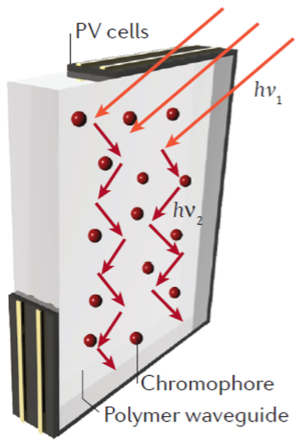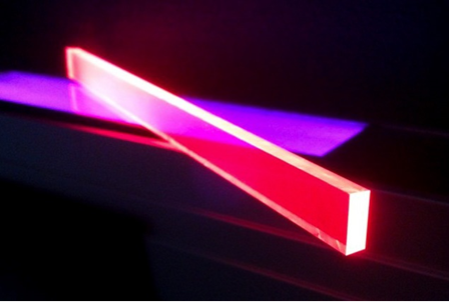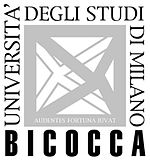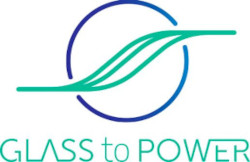Dow converting LEDs: Lighting and display is at the core of modern society. Developing ever more efficient devices thus drives a large academic and industrial community. We will be building on this endeavor by developing and improving the efficiency of QD based downconverting LEDs.
Down converting LEDs are an ingenious solution to obtain the full spectral color range by combining highly efficient blue emitting InGaN light emitting diodes and QDs. The device architecture is quite simple: a film of QDs emitting either green or red is deposited on a blue InGaN LED “chip” . The QDs absorb the light coming from the LED and then emit their own color. In this way the blue photons are down converted to lower energies by the reabsorption process. With this approach, high color purity is attained and color mixing (known as color cross-talk) is reduced; also, printing processes from QD colloidal solutions make these devices available for mass-production.
To fabricate these devices, InP QDs have attracted interest as they are RoHS compliant. Combined with their high photoluminescence quantum yield (PLQY) and tunable emission color (from cyan to red), we aim to surpass established toxic Cd-based QD technology. However, certain challenges remain such as photoluminescence stability and large linewidths. Our aim will be to gain insight into the modes of failure of InP QDs under working conditions and to develop synthetic methodologies that provide improved InP QDs.
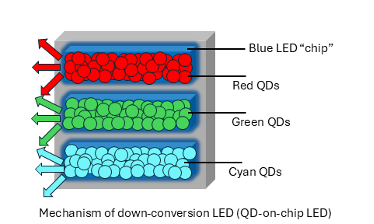
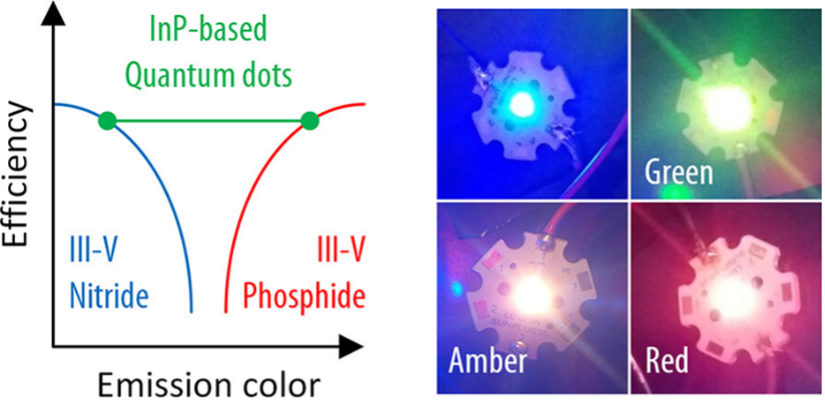
By Eder Castillo
Optically pumped lasers: Light-matter interactions can be classified into three types: photon absorption, spontaneous emission, and stimulated emission. An incident photon of high enough energy, can promote a QDs from its ground state (valence band) to their excited state (conduction band) via photon absorption. The process of absorption results in the formation of an “exciton”, a bound electron-hole pair. The QD can then relax back to its ground state by photon emission. Typically this is achieved through spontaneous emission, or more commonly known as photoluminescence.

In 1916 Einstein described a different relaxation pathway known as stimulated emission. This process occurs when an incident photon interacts with an excited QD to produce a second photon with the same frequency, polarization and direction. Such a process competes with photon absorption, and thus to promote stimulated emission, the probability of absorption needs to be reduced. This can be accomplished by further exciting the QDs, producing multiexcitons and resulting in population inversions. However, multiexctions do not usually live very long after photoexcitiations (<100 ps) due to detrimental non-radiative processes and thus obtaining population inversion is non-trivial.
Significant research was then dedicated to extend the lifetime of multiexciton states. One key insight was through the volume scaling of Auger processes—the prominent source of non-radiative recombination. As the QDs are made larger Auger processes become less significant and multiexcited states live longer. This motivates our work to study larger QDs that display optical properties similar to bulk but retain their colloidal processability. These QDs were coined bulk nanocrystals (BNCs). To this end we will study the synthesis and optical properties of CdS BNCs as gain media in optically pumped lasers.
By Chia-Kai Lin
Luminescent solar concentrators:
Luminescent solar concentrators (LSC) are devices that guide incident light through a window towards solar cells. These are fabricated by incorporating a chromophore such as QDs within the window. The incorporated QDs absorb incident sunlight. The excited QDs then relax thorough photon emission, with a portion of these photons being waveguided to the edges of the window where a solar cell is placed—producing electricity. Such devices are promising as they could serve as semitransparent photovoltaic windows to achieve buildings with net zero energy consumption.
To assemble efficient LSCs photon reabsorption by the chromophore needs to be minimized. This can be accomplished by minimizing the spectral overlap between absorption and emission, i.e. increasing the Stokes shift. In this regard QDs become promising candidates for LSCs as they can be engineered to have large Stokes shifts. Particularly, the family of I-III-VI2 QDs displays good quantum yields and a limited spectral overlap between absorption and emission. To this end we will study the synthesis and optical properties of CuInS2 QDs and reveal how they can be incorporated into commercially relevant LSCs.
